Mineral Deficiencies | Botany Optional for UPSC PDF Download
Introduction
Plants are remarkable organisms, vital not only for our ecosystems but also for our survival. However, did you know that plants, just like humans, have nutritional needs? In fact, they require 16 essential nutrients to thrive and grow properly. Nutrient deficiency in plants can be a serious issue, impacting their growth and overall health. In this article, we will delve into the world of plant nutrition, exploring the various essential nutrients, their functions, and the telltale signs of deficiency. So, whether you are an avid gardener or simply curious about the green world around you, read on to expand your knowledge about identifying nutrient deficiency in plants.
Essential Nutrients for Plants
Plants are resourceful when it comes to creating their own food through the process of photosynthesis, which involves harnessing carbon dioxide, water, and sunlight. However, they also rely on external sources for essential nutrients. These nutrients can be categorized into two groups: macronutrients and micronutrients.
Common Nutrient Deficiencies
Mobile Nutrients
Mobile nutrients are essential elements that plants require for healthy growth and development. Typically, symptoms of deficiency are first observed in older leaves located at the lower part of the plants.
1. Nitrogen (N):
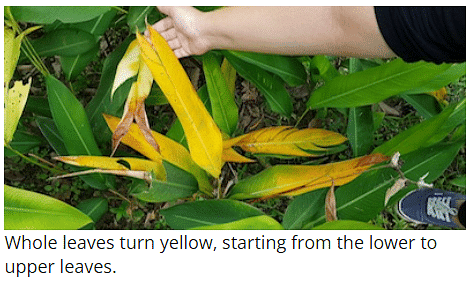
- Nitrogen is a crucial nutrient often provided to plants through fertilizers. Plants absorb nitrogen in the form of ammonium or nitrate, which can dissolve in water and be washed away from the soil.
- Nitrogen is essential for promoting rapid growth, particularly in fruit and seed development. It also enhances leaf size and quality and accelerates plant maturity.
- Symptoms of deficiency: Initially, the entire plant exhibits general chlorosis, turning light green and progressing to yellowing of older leaves before affecting younger leaves. Plants become thin and stunted, and if not addressed promptly, secondary shoots develop poorly.
2. Phosphorus (P)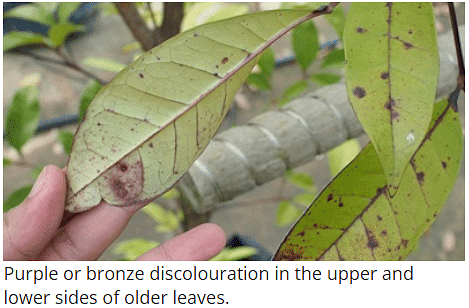
- Phosphorus is another vital component of fertilizers, and plants absorb it in the form of phosphate.
- Phosphorus plays a crucial role in promoting photosynthesis, protein formation, seed germination, flower stimulation, and budding. It also accelerates the maturation of plants.
- Symptoms of deficiency: Older leaves develop a purple or bronze hue on their undersides due to the accumulation of the pigment anthocyanin. Affected plants exhibit slow growth and are smaller compared to healthy plants.
3. Potassium (K)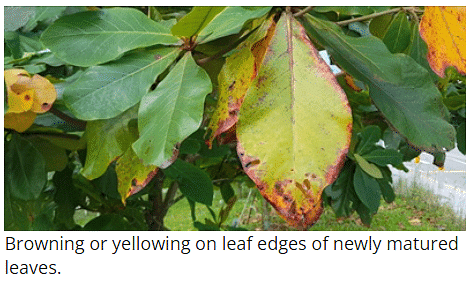
- Potassium is the third major component in fertilizers, and plants absorb it as an ion, which can be easily leached and lost through soil runoff.
- Potassium is necessary for plants to produce sugars for protein synthesis, support cell division, and facilitate root development. It also enhances a plant's resistance to diseases.
- Symptoms of deficiency: New matured leaves show chlorosis at the leaf edges, followed by interveinal scorching and necrosis from the leaf edges toward the midrib as the deficiency worsens. Chlorosis resulting from potassium deficiency is irreversible even if potassium is later provided to the plants.
4. Magnesium (Mg)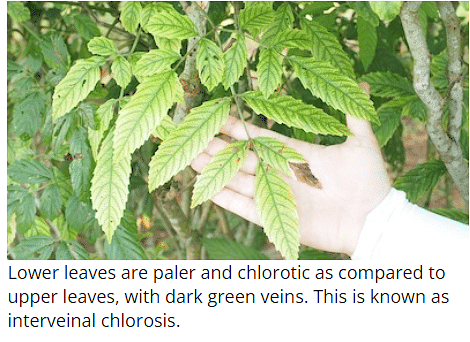
- Magnesium is a fundamental component of the chlorophyll molecule, which is essential for photosynthesis.
- Magnesium aids in the production of carbohydrates, sugars, and fats through plant enzymes and regulates nutrient absorption.
- Symptoms of deficiency: Older leaves exhibit interveinal chlorosis, with yellowing occurring between the veins. In severe deficiency, plant growth rate decreases, leaf size reduces, and lower leaves may drop off.
Immobile Nutrients
Immobile nutrients are essential elements that plants require for proper growth and development. Typically, symptoms of deficiency become evident in younger leaves located at the upper part of the plants.
1. Calcium (Ca)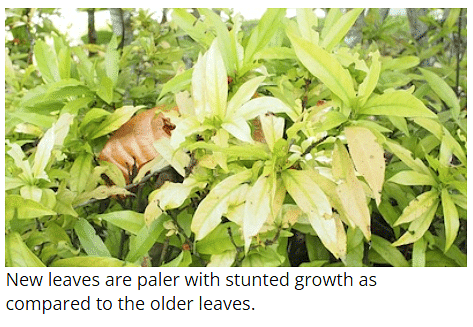
- Calcium is a fundamental component of plant cell walls, providing structural support. It remains immobile within plants and is retained in older tissues throughout the growing season. Consequently, the initial signs of deficiency manifest in younger leaves and leaf tips.
- Plants rely on calcium to generate new growth points and root tips.
- Symptoms of deficiency: New leaves, buds, and roots exhibit stunted growth. Younger leaves curl downward, with browning of leaf edges and tips, a condition known as tip burn. In some plants, affected foliage may appear abnormally green. Additionally, the roots become short and stubby.
2. Iron (Fe)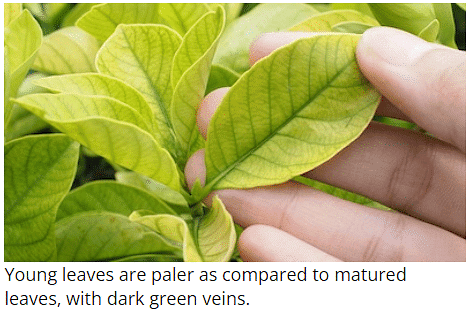
- Iron deficiency shares similarities with magnesium deficiency but primarily affects young leaves and shoots instead of older leaves.
- Iron is essential for plants in the synthesis of chloroplast proteins and various enzymes.
- Symptoms of deficiency: Newly emerging leaves and young shoots display light green to yellow interveinal chlorosis. It is common to observe shoots deteriorating from the tip inward. In severe cases, newly formed leaves may shrink in size, turn nearly white, and develop necrotic spots.
3. Manganese (Mn)
- Manganese serves as an enzyme activator in nitrogen assimilation processes.
- Plants require manganese for crucial functions like photosynthesis, respiration, and enzyme reactions.
- Symptoms of deficiency: Newly emerging leaves show diffuse interveinal chlorosis, with poorly defined green areas surrounding the veins. Chlorosis and necrotic spotting are common indicators. In severe deficiencies, new leaves become smaller, and tip dieback may occur.
4. Zinc (Zn)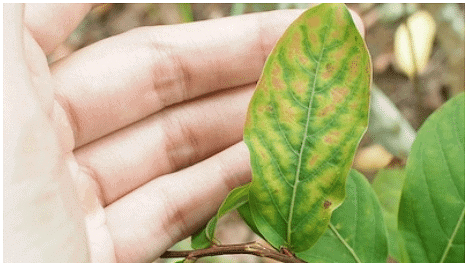
- Zinc is essential for activating plant growth regulators, particularly auxin and indole acetic acid (IAA).
- Zinc plays a vital role in the activation of plant growth regulators.
- Symptoms of deficiency: Younger leaves may exhibit chlorosis, bronzing, or mottling. Interveinal chlorosis on young leaves is followed by reduced shoot growth, characterized by short internodes and small, discolored leaves, resulting in a rosette-like appearance.
5. Boron (B)
- Boron is absorbed by plants as borate from the soil and is crucial for cell differentiation at growing tips, where active cell division occurs.
- Symptoms of deficiency: Affected plants become stunted and deformed. There is an increase in side shoot proliferation, often referred to as "witches' broom," as the main stem weakens, allowing lateral shoots to grow. This is associated with the loss of apical dominance. In flowering shrubs, new growth becomes dark green, and leaves develop a cupped or puckered appearance with short internodes.
Gardening with Edibles
- Gardening with Edibles is an initiative that aligns with Singapore's City in Nature vision, which aims to bring greenery closer to all residents and involve the community in nurturing nature for the benefit of health and well-being. This program, launched in June 2020 by NParks (National Parks Board), encourages community gardening and promotes the cultivation of edible plants.
- As part of the Gardening with Edibles initiative, NParks has distributed approximately 400,000 free seed packets to interested members of the public. In addition to the seeds, relevant resources and guidance for gardeners are available online to assist them in their gardening journey.
- NParks is also expanding its allotment gardening scheme and the Community in Bloom program to welcome even more residents into the gardening community. These efforts aim to foster a sense of ownership and stewardship for nature among residents.
- Furthermore, the Gardening with Edibles initiative supports Singapore's national strategy to enhance food resilience. The "30 by 30" goal, led by the Singapore Food Agency, seeks to produce 30% of Singapore's nutritional needs locally by the year 2030. The program receives joint funding from founding partners DBS Bank and Tote Board through the Garden City Fund.
|
179 videos|143 docs
|





















